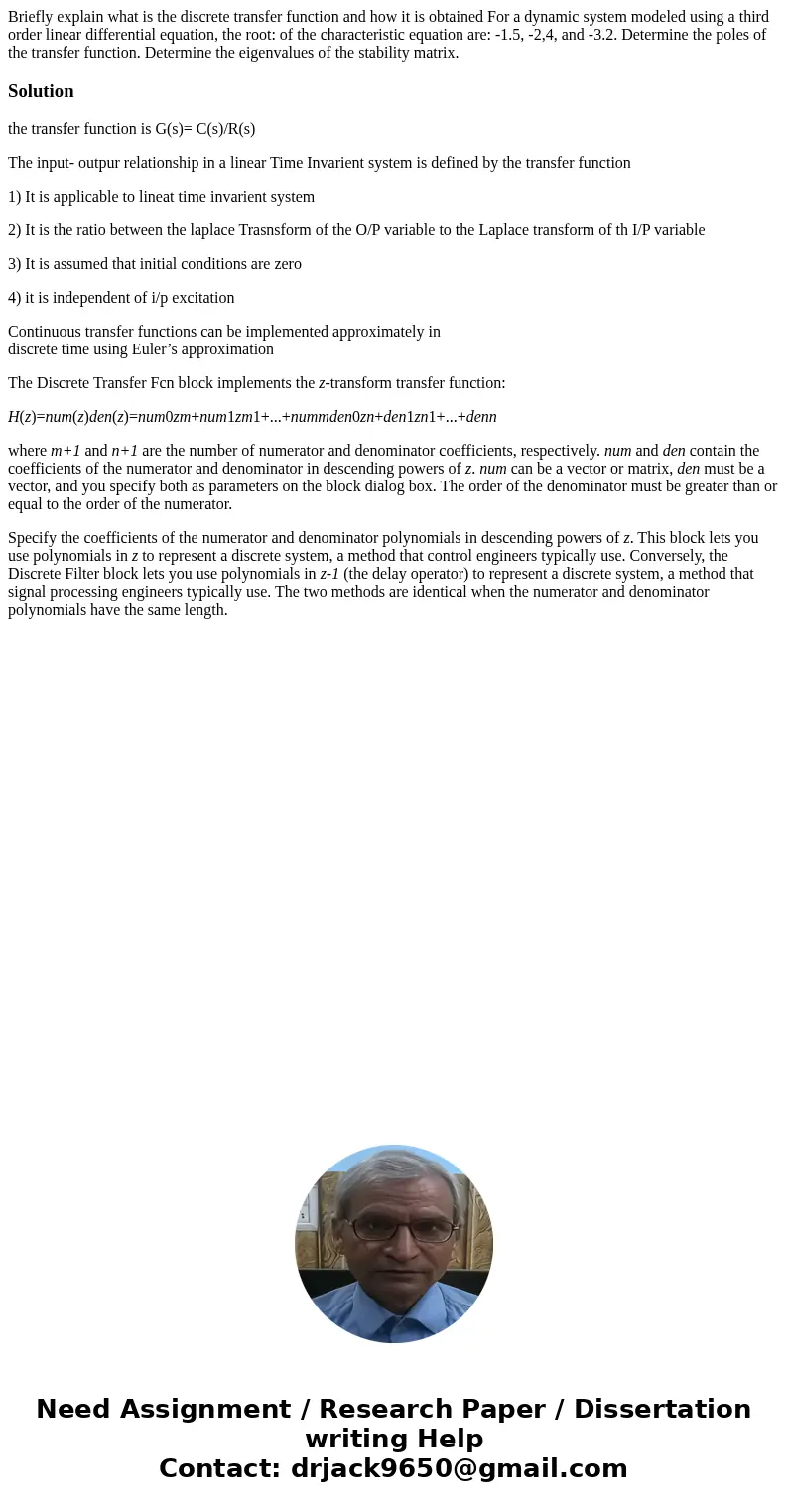Briefly explain what is the discrete transfer function and h
Solution
the transfer function is G(s)= C(s)/R(s)
The input- outpur relationship in a linear Time Invarient system is defined by the transfer function
1) It is applicable to lineat time invarient system
2) It is the ratio between the laplace Trasnsform of the O/P variable to the Laplace transform of th I/P variable
3) It is assumed that initial conditions are zero
4) it is independent of i/p excitation
Continuous transfer functions can be implemented approximately in
discrete time using Euler’s approximation
The Discrete Transfer Fcn block implements the z-transform transfer function:
H(z)=num(z)den(z)=num0zm+num1zm1+...+nummden0zn+den1zn1+...+denn
where m+1 and n+1 are the number of numerator and denominator coefficients, respectively. num and den contain the coefficients of the numerator and denominator in descending powers of z. num can be a vector or matrix, den must be a vector, and you specify both as parameters on the block dialog box. The order of the denominator must be greater than or equal to the order of the numerator.
Specify the coefficients of the numerator and denominator polynomials in descending powers of z. This block lets you use polynomials in z to represent a discrete system, a method that control engineers typically use. Conversely, the Discrete Filter block lets you use polynomials in z-1 (the delay operator) to represent a discrete system, a method that signal processing engineers typically use. The two methods are identical when the numerator and denominator polynomials have the same length.

 Homework Sourse
Homework Sourse